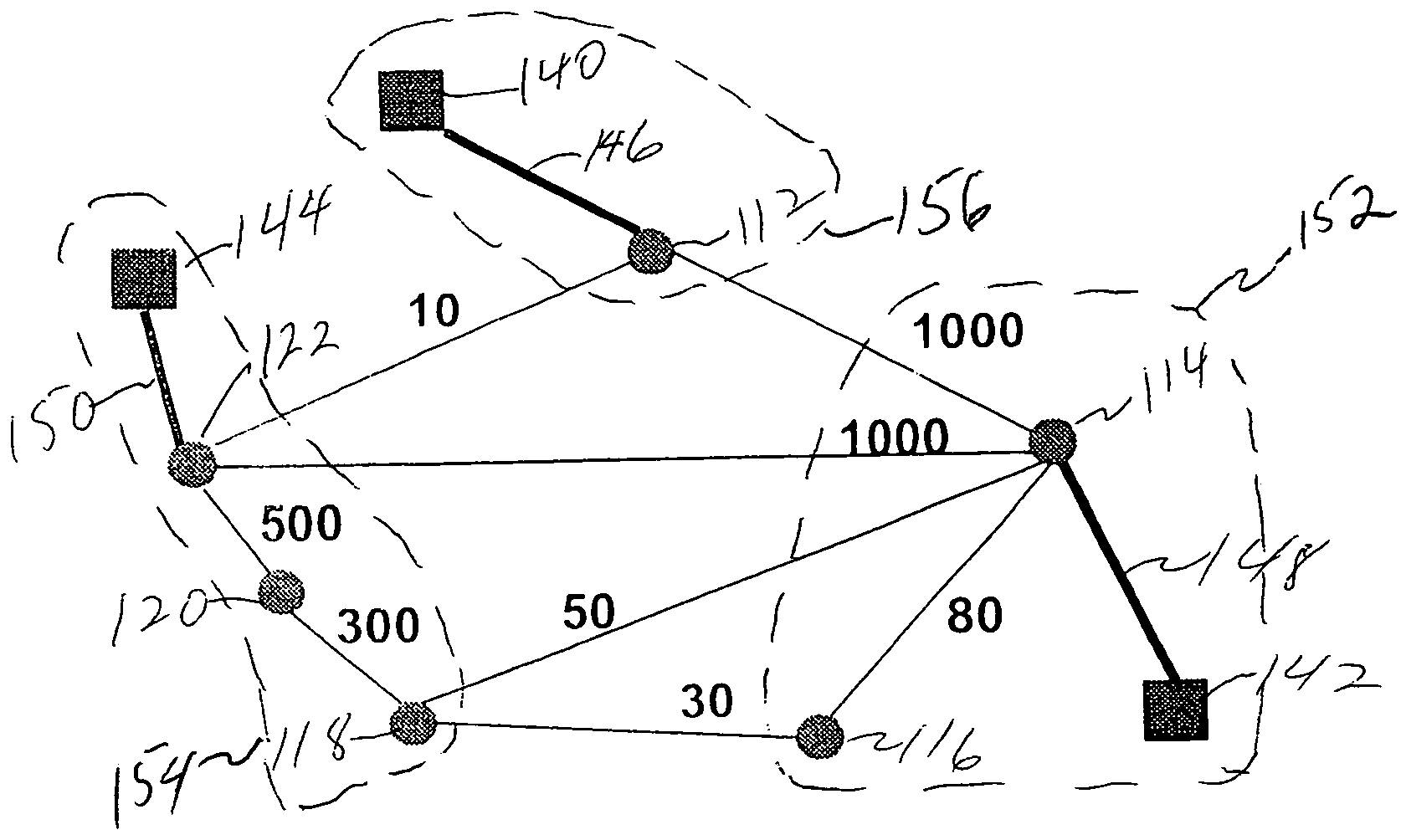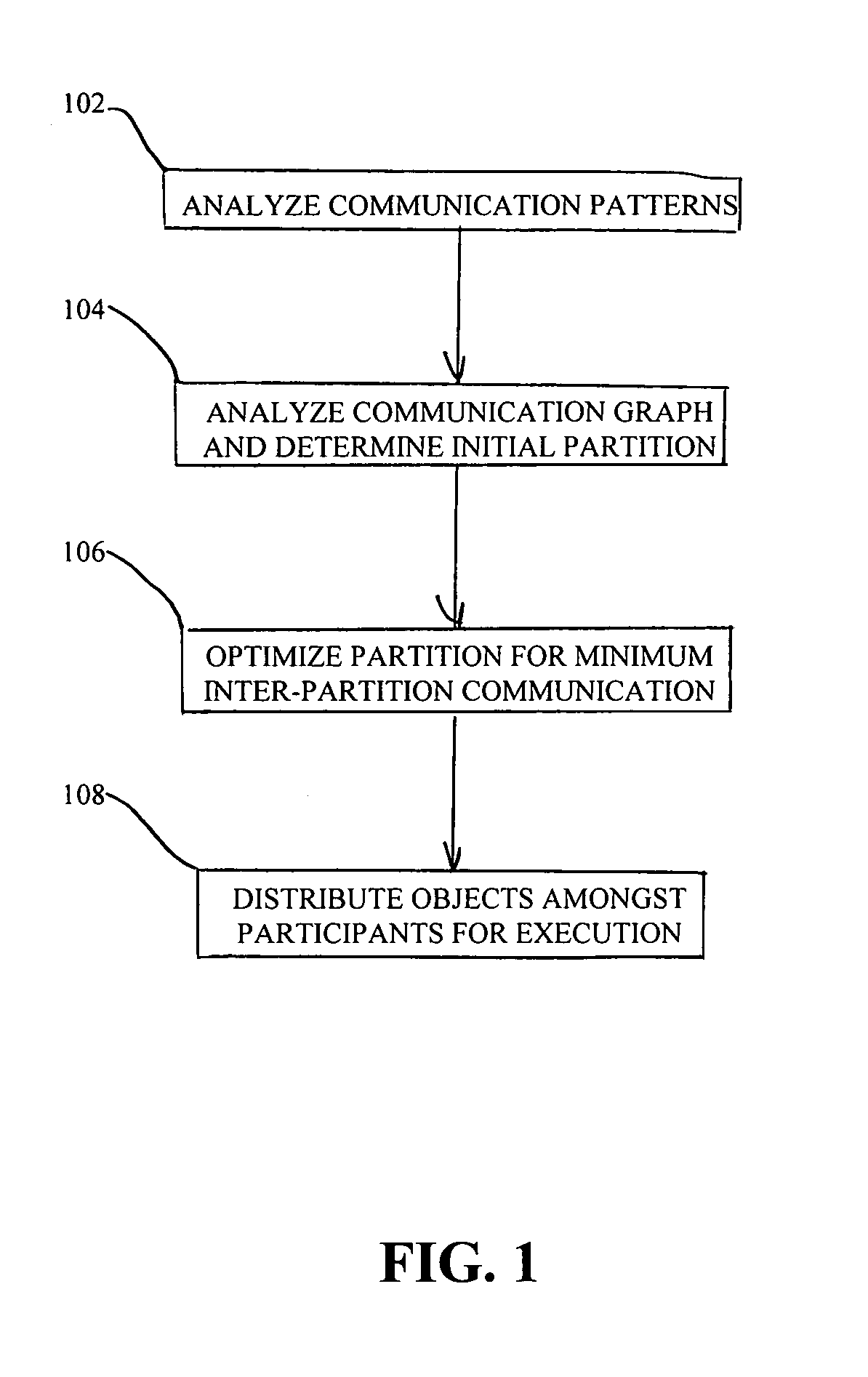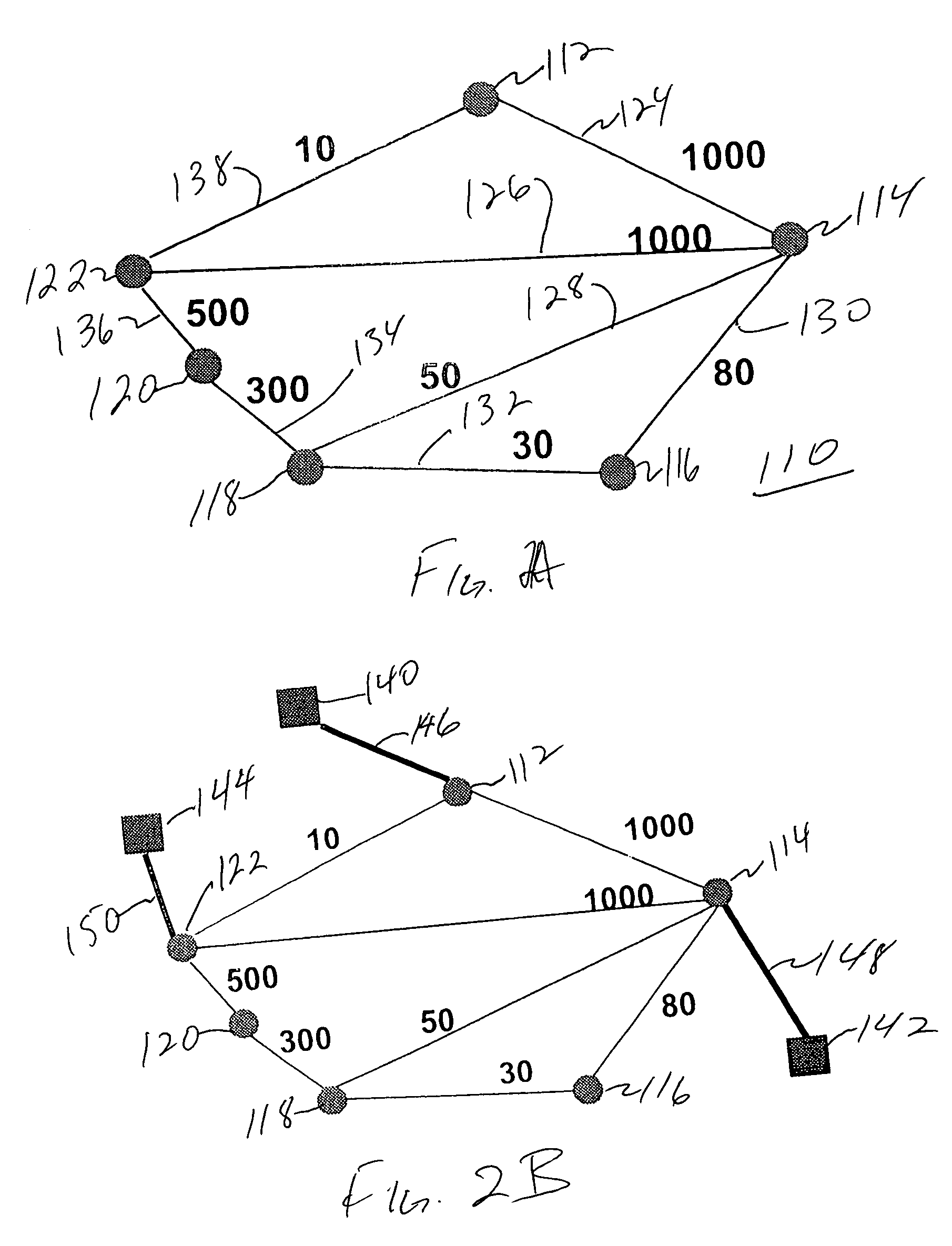Independent net task identification for efficient partition and distribution
- Summary
- Abstract
- Description
- Claims
- Application Information
AI Technical Summary
Benefits of technology
Problems solved by technology
Method used
Image
Examples
Embodiment Construction
[0025]As referred to herein, a communication graph is a graphical representation of a multifaceted task such as a computer program. Each facet of the task is an independent task or object that is represented as a node and communication between tasks or nodes is represented by a line (referred to as an edge) between respective communicating nodes. Participating individuals (individuals receiving and executing distributed tasks) are referred to as terminal nodes or machine nodes. A net is a collection of nodes connected together by edges. Two nets are independent if none of the non-terminal nodes of one net shares an edge with a non-terminal node of the other. Thus, for example, a communication graph of a computer program might include a node for each program object and edges would be between communicating objects, with edges not being included between objects not communicating with each other. In addition, a weight indicative of the level of communication between the nodes may be ass...
PUM
 Login to View More
Login to View More Abstract
Description
Claims
Application Information
 Login to View More
Login to View More - R&D
- Intellectual Property
- Life Sciences
- Materials
- Tech Scout
- Unparalleled Data Quality
- Higher Quality Content
- 60% Fewer Hallucinations
Browse by: Latest US Patents, China's latest patents, Technical Efficacy Thesaurus, Application Domain, Technology Topic, Popular Technical Reports.
© 2025 PatSnap. All rights reserved.Legal|Privacy policy|Modern Slavery Act Transparency Statement|Sitemap|About US| Contact US: help@patsnap.com



